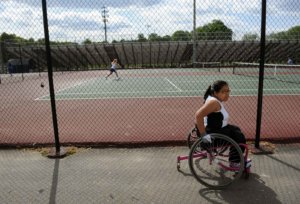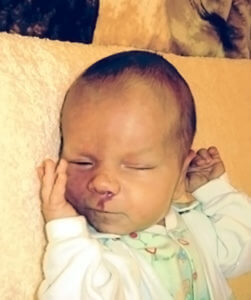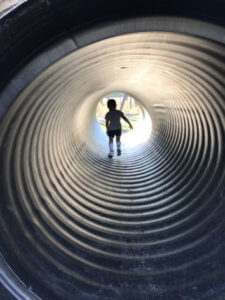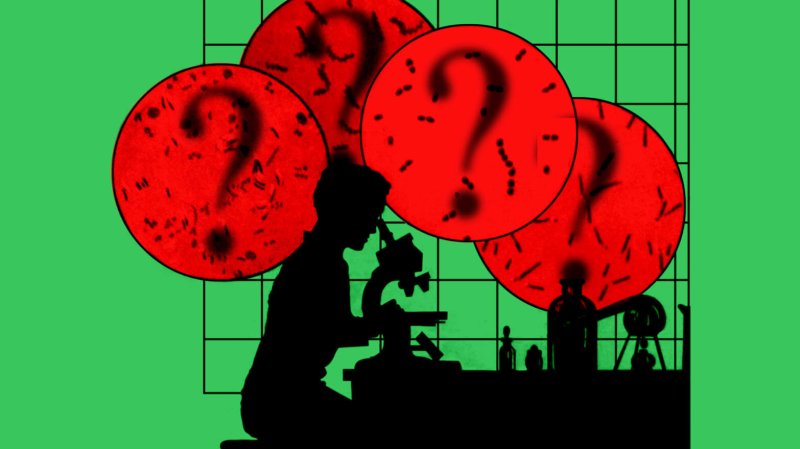This was the beginning of Collins’ journey to find her daughter’s diagnosis. A freelance web developer, Collins already had two healthy children from uneventful pregnancies and was completely new to the disability world. Her journey over the next eight months would span multiple clinics, countless websites, and even continents before yielding answers. Just a few decades ago, children with seemingly undiagnosable conditions—children like her little girl—received a catchall label of “multiple disabilities” without further investigation. But things have changed.
Today genetics technologies and digital media capabilities have transformed the landscape for children and families with rare—and sometimes virtually unknown—syndromes. We now learn and share information about these lived experiences in fundamentally different ways than just a generation ago. As a result, people are now able to connect with others who have the same diagnoses or symptoms, simultaneously gaining new understandings of their shared experiences while also raising awareness about previously little-known conditions. Consider the example of myalgic encephalomyelitis (ME; formerly called chronic fatigue syndrome), an illness that received unprecedented media coverage in recent years. Indeed, the very concept of having a rare disorder has never been more common.
Between 2012 and 2014, I heard many stories like Collins’ while conducting my dissertation research on family experiences with rare or undiagnosable disabilities. But prior to my long-term research, my interest in these issues developed during summer fieldwork trips to study disability advocacy in Guatemala. Many of the children I met there had multiple disabilities, as well as complex health needs, but they did not have a clear diagnosis—at least, not as far as anyone knew. Most had an array of sensory, intellectual, and physical disabilities in addition to various health issues. Their cases were complex, but the reasons for their complexity were unclear. As a medical anthropologist, I was fascinated by the seemingly ambiguous roots of these local disability worlds.
The diagnostic ambiguity of daily life that I witnessed during that early research surprised me. I had naïvely anticipated that the patients I met would have fixed labels for their conditions and associated disability advocacy communities—recognized designators like Down syndrome, autism, or even rare but still relatively well-known genetic conditions like spina bifida. Instead, I often encountered shrugs when I inquired about their specific diagnoses; they did not exist.

While families in these communities wanted a diagnosis for their children, they recognized that their lives had to move forward without one. In turn, these families prioritized their shared experiences—both social and medical—over the possibility that they also shared common diagnoses. They preferred to focus on supporting the needs of individuals and their families over offering—or speculating about— medical “labels.” I was intrigued.
I began to look more closely at disability work in the United States and found a small yet burgeoning movement focused on rare syndrome awareness, research, and activism. I simply hadn’t known to look for it before. The infrastructure for this community was growing in unprecedented ways thanks to a rising number of online support groups, social media initiatives, advocacy devoted to specific diagnoses, and even nonprofits serving rare disease and undiagnosed patients in general.
This movement is accomplishing two parallel goals. Increasingly, it is helping people to find diagnoses for their rare conditions by allowing unusual experiences to be widely shared and discovered. But it also, just as valuably, creates a space where those seeking a diagnosis can bond over their common causes and their shared experiences of being undiagnosed. Just as I saw in Guatemala, patients didn’t necessarily need a specific diagnosis to accomplish the goal of no longer feeling alone. In the U.S. and elsewhere, this creates possibilities for belonging that have emerged largely since the early 2000s.
According to the Orphan Drug Act, a 1983 U.S. law designed to encourage the development of treatments for rare disorders, a disease is considered rare if it affects fewer than 200,000 people per year. Many such diseases impact only a handful of people. Most rare conditions have a genetic basis and often take years to diagnose. There are approximately 7,000 identified rare genetic diseases and disorders, with more added each year. In one study published in 2017, scientists found 14 new disorders that caused developmental delays in children—new possible answers for families searching for a diagnosis. According to Global Genes, a leading rare-disease advocacy organization, up to 1 in 10 people in the United States has a rare disease or disorder, and around half of those are children. The organization estimates that 80 percent of the rare disease community has one of 350 rare diseases. The remaining conditions are harder to pin down and include the rarest of the rare. Most of the families I met fell into this sweepingly vague “other” category.
In the case of Collins’ daughter, medical experts were initially unable to provide an accurate diagnosis. They floated several theories, but none stuck. The family began to search on their own, a story I would hear repeatedly in my research. Among families and professionals working on rare disorders, this process is known as the “diagnostic odyssey.” It often involves a combination of multiple specialist visits, misdiagnoses, and extensive research and networking—increasingly online. Collins was no exception.

“It was very circuitous,” Collins said of her own diagnostic search. “Every point of the journey was very DIY [do it yourself] and fringe.” She began by combing the internet for anything she could find about vascular birthmarks, hemi-hypertrophy (asymmetrical sides of the body), and her daughter’s other seemingly mismatched characteristics. This led her to a Yahoo group, then to a mother’s blog about having a child with an extremely rare diagnosis.
“I read every inch of that website, including the comments,” said Collins. She could not believe how much her daughter looked like the infant pictured, but the little girl had a diagnosis that did not perfectly fit Collins’ daughter. Collins knew she was close, though. She found the key to her daughter’s diagnostic mystery in one of the comments.
“Your child looks like she has the same condition as my daughter,” wrote another mother, who lived in the United Kingdom, to the blogger. “Here’s my blog.” Collins clicked on the link and was immediately pulled in by the photographs.
Collins brought this tentative diagnosis to her family pediatrician, then to a geneticist in the closest city to her family’s bucolic home in the Northeast. They were both receptive. Could this be the explanation for her daughter’s seemingly mismatched symptoms and features—the congenital birthmarks, low muscle tone, and asymmetrical body? Collins grew increasingly plugged into social media and got the name of a specialist in the Midwest who was an expert in what they suspected was her daughter’s rare condition, M-CM, or macrocephaly-capillary malformation syndrome. At the time, there were only 120 documented cases. The family traveled across multiple states to see him. He confirmed the girl’s diagnosis and gave them a 15-page report about the condition. They didn’t know much, but it was a start.
In 2010, shortly after receiving her daughter’s diagnosis, Collins combined her personal experience with her professional skills as a web developer to launch M-CM Network. This nonprofit organization aims to raise awareness and disseminate knowledge about the syndrome, of which there are fewer than 300 diagnosed cases. The website has grown continuously and is now a hub for families and professionals alike, and its resources can have a profound impact on parents’ diagnostic journeys. While less than a decade ago Collins had to travel hundreds of miles for that initial printout about M-CM, thanks to her efforts with the M-CM Network, families today can access critical information in just a few clicks.
Stories of ambiguous and unknown conditions occupy an increasingly prominent—and public—role in our lives. The documentary Unrest, which premiered on PBS in January 2018 and was later released on Netflix, drew widespread attention to the diagnostic struggles of patients with ME. The New York Times Magazine now features a weekly column that spotlights—and solves—medical mysteries. In recent years, detailed features about parents’ successful diagnostic odysseys have appeared in The New Yorker, NPR, and other major publications.
On one hand, these stories embody narratives of scientific progress and potential. They congratulate us, as a society, for identifying and treating rare conditions. Who doesn’t like a good mystery with a satisfactory conclusion? At the same time, these stories also remind us of the limits of what is knowable. For many people, a diagnosis is not the end of the story—just because a condition has a name doesn’t mean that doctors know how to treat it, or even what to do about it. A diagnosis might reveal nothing about what the future holds, particularly if the condition is new or extremely rare.
For many others, a diagnosis will remain elusive. Some experts estimate that up to 30–40 percent of children with disabilities in the U.S. have an underlying, undiagnosed condition. The growing awareness and normalization of rare conditions has helped generate a new public space for “undiagnosis” itself, whether as a temporary state or an ongoing reality. Perhaps one effect is a new ability to rest—with awareness and also comfort—in the unknown.
In her monthly column What Genes Can’t Tell Us in the online literary magazine Catapult, writer Taylor Harris explores her experiences with a son whose disabilities stem from an undiagnosed condition. I came across her work by accident in 2018 when several of her essays began making the rounds on social media. Those essays kept trending many months after publication, demonstrating an appeal among general readers.

In one post, Harris deftly explored her own awakening about “undiagnosis” as a potential shared identity—something that had not occurred to her previously. She describes an otherwise uneventful dinner party where she ran into the mother of one of her son’s former classmates. They began chatting and realized that, while the boys were different in many ways, they shared one key feature: being undiagnosed.
Harris wrote of the sense of “connection,” as she called it, that emerged through this conversation. When I emailed and asked her to elaborate further, she explained: “It had never crossed my mind that one of the eight or so students in my son’s special education preschool class might also be undiagnosed. I just assumed their parents faced different challenges than I did—really, really hard and sometimes scary challenges, but ones linked to a diagnosed condition. I was wrong.”
For Harris, this triggered a key shift in her relationship to this other mother: They now had a connection that transcended the seemingly individualized predicament of the diagnostic odyssey. “We sure would like to have answers about our sons,” she explained, “but while we don’t, it feels comforting to have the gift of a knowing nod or a text that says ‘me too.’”
Parents and patients alike dwell in this duality of the rare disease experience. As society becomes more aware of these rare conditions being ever present, it becomes all the more evident that this is only the beginning of identifying and treating them. However, together—in local communities, through the media, in chatrooms and via social media, or in impromptu talks at dinner parties—people are learning more about how to navigate these rare but increasingly shared worlds.
Many are creating new forms of coming together predicated on radical difference: What could be more radical than a condition so rare that it cannot be identified, or, if it can be, it is found in only a few dozen or a hundred other cases around the world? An acknowledgment of how common rare diseases actually are allows us to embrace a new type of diversity: Human experiences of health and disability are even more varied than commonly believed. They illuminate a broad swath of possible human difference, whether physical, intellectual, sensory, psychological, or some combination therein.
The growing awareness of the staggering variation of bodies, minds, and experiences pulls people in. It calls on us to acknowledge the rare as a part of the world that is actual and expanding. It is the diagnostic equivalent of finding a previously undiscovered group of people tucked away on a small island or of capturing a yeti or Loch Ness monster. It gestures toward a new sense of social organization in which seemingly singular cases are coming in from the margins, forming a growing community that is much larger than imagined. What if the marginal is, in fact, much more commonplace than we know?
There is a well-known saying among medical students: “When you hear hoofbeats, think of horses, not zebras.” It cautions future doctors not to venture too far afield, to remember that the most likely explanation is typically the right one. But such logic has its limits. In an age of increasing genetics technologies and shared information, we can now turn our attention toward the uncommon or otherwise unexpected diagnostic realities of millions. In shifting our gaze from horses to zebras, we fundamentally reimagine difference. As we see from these new forms of storytelling, recognition, and organization of bodily experiences, the diagnostic fringe is moving toward the center.
Liz Lewis is an anthropologist based in Austin, Texas. Follow her on Twitter @LizLewisPhD
A version of this article was originally published on Sapiens’ website as “Undiagnosed – When Rare Diseases Aren’t So Rare” and has been republished here with permission.































